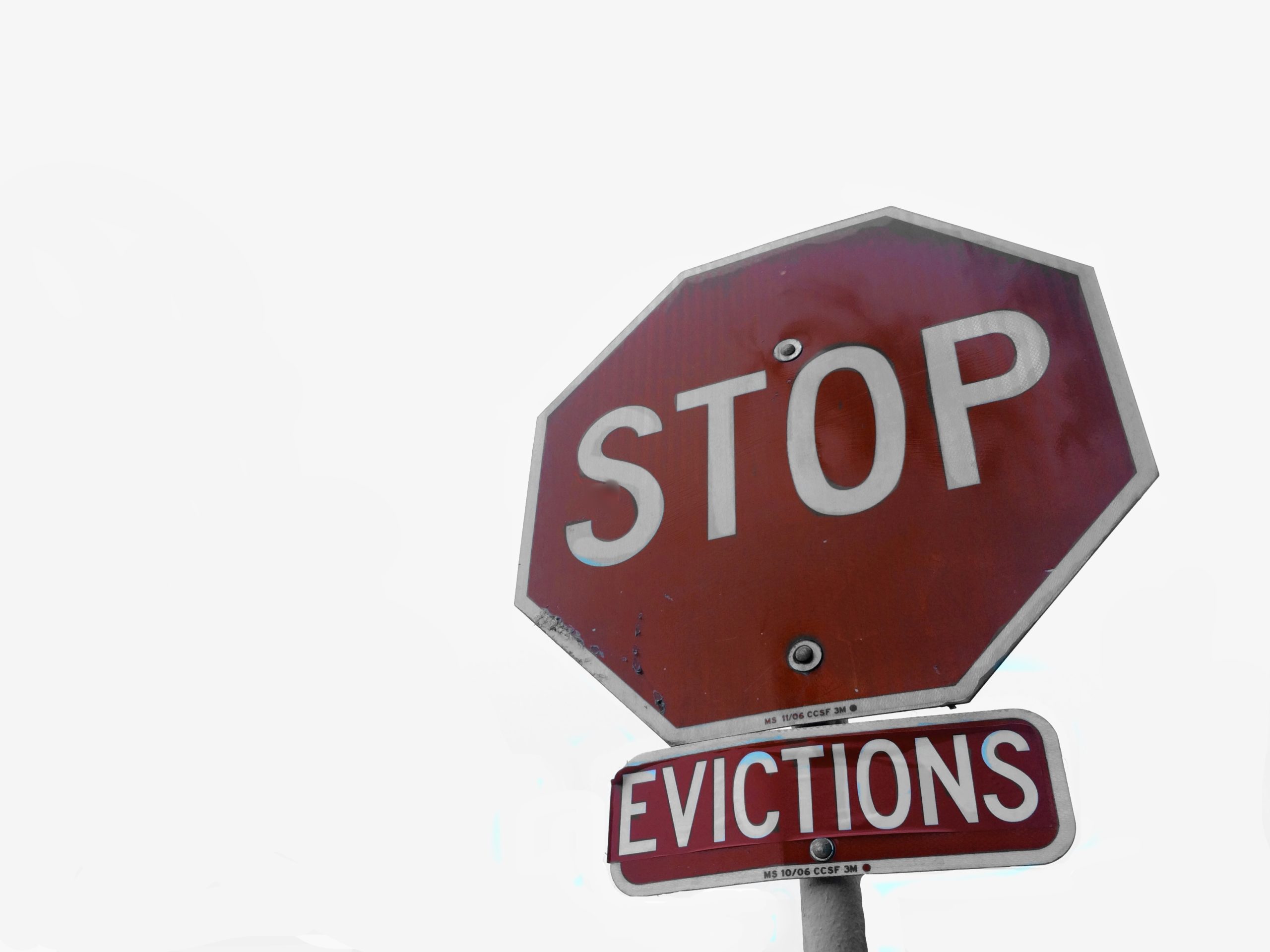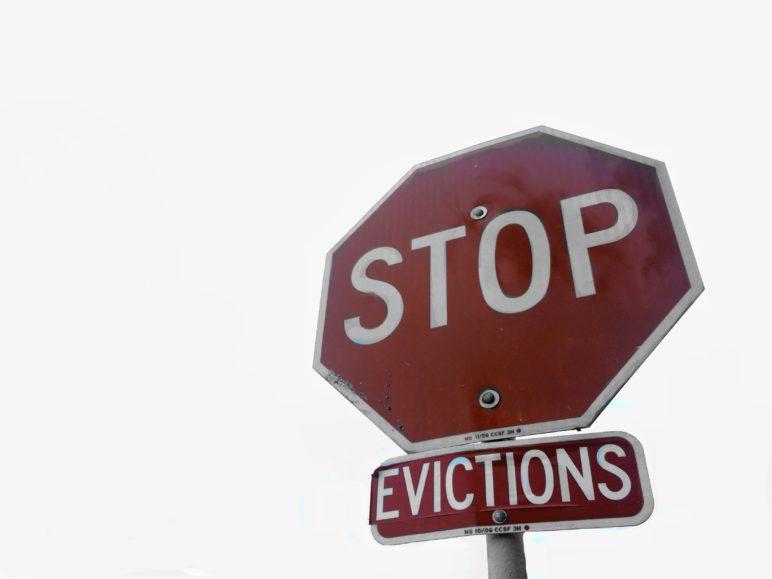4/16 Update: Washington extended its eviction moratorium through June 4th and expanded the order to prevent all residential and commercial evictions, barring cases of safety risks. The new order also prohibits rent and deposit increases, and requires landlords to accept payment plans for renters affected by the crisis. The article now reflects this update.
A staggering 22 million American workers filed unemployment claims over the past month as states closed nonessential businesses due to the COVID-19 outbreak. In Canada, over four million workers applied for emergency unemployment assistance. Among the hardest hit were renters—who, on average, earn less and spend a greater share of their income on housing than homeowners. A spate of eviction moratoriums will help protect Cascadian renters—but only for now.
Cities, states, and provinces throughout this region and beyond have enacted eviction moratoriums to help laid-off and furloughed workers stay in their homes even if they can’t pay rent. The US government stepped in to temporarily ban evictions in homes with federally backed mortgage loans, but it also granted homeowners more lenient mortgage payment options. In addition, the US approved one-time cash payments, while both Canada and the US granted supplemental unemployment assistance that may help some tenants make rent.
Temporary eviction bans and one-time financial assistance, though important steps in the right direction, aren’t enough to protect renters. Early estimates say a quarter of US tenants missed April rent deadlines, and that will likely get worse in May. After the eviction bans end, months of accumulated unpaid rent bills will come due. Ensuring housing security for renters will require far more robust government support.
After the eviction bans end, months of accumulated unpaid rent bills will come. Ensuring housing security for renters will require far more robust government support.

Eviction protections sweep Cascadia
Just over two weeks after the US declared the coronavirus a national emergency, eviction bans covered nearly all of Cascadia, as shown in the table below. Local governments were first to act, including Seattle, Everett, Burien, Spokane, King County, and Spokane County in Washington, and Beaverton, Portland, Gresham, Hillsboro, Multnomah County, and Clackamas County in Oregon. Boise, Idaho banned eviction of public housing residents and forgave their April rent. Then Washington, Oregon, British Columbia, and Alaska enacted broader regional bans, ranging from banning all evictions to blocking those related to coronavirus-induced financial distress for one to three months. State Supreme Courts in Alaska, Idaho, Oregon, and Washington all suspended non-emergency court proceedings, effectively barring evictions across those states.
Eviction Moratoriums across Cascadia
| LOCALE | TYPE OF MORATORIUM |
|---|---|
| Alaska | State lawmakers passed a bill preventing evictions of tenants who can demonstrate coronavirus hardship. Alaska courts suspended eviction hearings through May 1st. |
| British Columbia | No new evictions allowed for the time being. Existing notices will be enforced only for safety reasons. |
| Idaho | Idaho Supreme Court suspended non-emergency court proceedings, including evictions, through April 15. |
| Boise | Moratorium on evictions from public housing through April. |
| Oregon | 90-day moratorium on residential and commercial evictions for nonpayment of rent. Oregon Supreme Court suspended court proceedings through June 1. |
| Beaverton | Residential eviction ban for nonpayment of rent. Those behind on rent due to COVID-related loss of income will have a six-month grace period to pay back rent after the emergency ends. |
| Clackamas County | Residential and commercial eviction ban for nonpayment of rent. |
| Hillsboro | Residential and commercial eviction ban for nonpayment of rent, late charges, utility charges, or any other fees due to COVID-related loss of income. |
| Lane County | Lane County Circuit Court suspended all landlord-tenant proceedings until after May 31. |
| Multnomah County | Residential eviction ban for nonpayment of rent and mortgages for the duration of the crisis. Those behind on rent due to COVID-related loss of income will have a six-month grace period to pay back rent after the emergency ends. |
| Gresham | Residential and commercial eviction ban for any reason related to the state of emergency or for no-cause evictions. |
| Portland | Residential eviction ban for nonpayment of rent and mortgages for the duration of the crisis. Those behind on rent due to COVID-related loss of income will have a six-month grace period to pay back rent after the emergency ends. |
| Washington | Residential and commercial eviction ban through June 4.. Law enforcement may not enforce evictions except for safety reasons. Washington Supreme Court suspended non-emergency court proceedings through April 24. |
| Clark County | Clark County Superior Court banned non-emergency evictions. |
| King County | King County Sheriff won't enforce court-ordered evictions (residential and commercial). King County Superior Court halted all residential evictions through April 17 and commercial/nonprofit evictions through May 3. |
| Seattle | Residential and commercial eviction ban for 60 days or until the emergency ends. |
| Pierce County | Pierce County Superior Court suspended court proceedings through April 24. |
| Snohomish County | Snohomish County Superior Court suspended civil cases until June 1. |
| Everett | Residential eviction ban for the duration of the crisis. |
| Spokane County | Spokane County Superior Court judge issued an emergency order that delayed existing unlawful detainer eviction orders until April 27. Spokane County Sheriff will not enforce evictions countywide. |
| Spokane | Commercial and residential eviction and foreclosure ban through April. |
British Columbia initially offered the strongest protections in Cascadia when it banned all new evictions, halted existing evictions (except in cases of safety threats), and prohibited rent increases. Washington extended its initial 30 day moratorium on residential evictions through June 4 and expanded the order to cover all residential and commercial evictions, ban rent increases, and require landlords to accept payment plans for unpaid rent rather than demand the full sum when the moratorium ends.
Oregon and Alaska offer much fewer protections in comparison. Oregon’s eviction moratorium only applies to evictions based on nonpayment of rent while Alaska limited its ban to those experiencing hardship due to the coronavirus, placing the onus on the tenant to prove hardship.
Some local moratoriums provide additional protections in various ways. Seattle’s ban, the first in Cascadia, extends to businesses too, and will last for 60 days or until the emergency ends. In Portland, the ban will last for the duration of the emergency, and those behind on rent due to loss of income will have six months to make up missed payments. While Idaho has no formal eviction ban in place (although the state Supreme Court suspended in-person proceedings), the city of Boise banned evictions for public housing residents for April and forgave their rent.
Down the West Coast, California—another early virus hotspot and the fifth-largest economy in the world—saw its major cities shut down days into the crisis. Soon afterward, the governor declared a shelter-in-place order for the entire state. Los Angeles, San Francisco, and Oakland, along with Sacramento, San Jose, Long Beach, and others, enacted a wide range of eviction bans, ensuring at the very least that landlords could not evict those who lost income due to the virus. In addition, the LA City Council paused rent increases for rent-controlled units (as has DC for all homes), while the Oakland City Council capped rent increases at 3.5 percent. California halted enforcement of evictions only due to nonpayment of rent, allowing landlords to continue filing notices and evict tenants for other reasons.
The coronavirus response exacerbates the existing renter crisis
Across the US, homeowners already enjoy nearly twice the median income of renters. And on average, homeowners spend only 19 percent of their income on housing, while renters spend 30 percent.
Across the US, homeowners already enjoy nearly twice the median income of renters. And on average, homeowners spend only 19 percent of their income on housing, while renters spend 30 percent.

This disparity holds true in Cascadia. In Washington state, 46 percent of renters report spending 30 percent or more of their income on housing, as do 49 percent in Oregon, 43 percent in British Columbia, and 42 percent in Idaho and Alaska. Meanwhile, only a quarter of Washington homeowners spend 30 percent or more of their income on housing, as do 27 percent in Oregon, 22 percent in Alaska, 21 percent in Idaho, and 20 percent in British Columbia.
Some federal and state relief gives better protections to homeowners than renters. As a part of the CARES Act, US lawmakers placed a four-month moratorium on eviction filings over nonpayment of rent and late fees for homes with federally backed mortgages—insured by Freddie Mac, Fannie Mae, or the Federal Housing Administration (FHA).
These protections extend to properties funded by various HUD voucher and rental assistance programs, such as rural housing voucher programs and those covered by the Violence Against Women Act (including housing funded by the Section 8 and Low Income Housing Tax Credit programs, public housing, and more).
But while Cascadia’s eviction moratoriums apply to all homes, the US federal protections apply only to a quarter of rental units, a total of 12.3 million homes. The US government leaves it up to individual cities and states to protect renters in the 31.5 million homes that don’t fall under the law’s purview (unless funded through the HUD programs listed above).
The new US law also grants property owners with federally backed mortgages—insured by Freddie Mac, Fannie Mae, or the FHA–-a 60-day moratorium on foreclosures and a six-month delay in mortgage payments, which homeowners can request to extend for up to a year.
But for housing with multifamily mortgage loans, which apply to properties with five or more units, the law operates differently. These owners may initially request forbearance for only a month, and can request to extend for only two more months.
Homeowners receive other perks renters don’t get. Not only can homeowners delay mortgage payments, in some cases for up to a year, but loan servicers may also allow them to tack late payments onto the end of their loan agreements so they don’t have to pay until well after the crisis is over. Plus, landlords delaying their own mortgage payments may continue collecting rent during the crisis. In contrast, renters under federal protections have just one month after the four-month moratorium ends to make up missed payments before landlords can evict them.
California and New York enacted similar measures to give homeowners leeway on mortgage payments. New York Governor Andrew Cuomo issued an executive order authorizing the state Department of Financial Services to require state-regulated financial institutions to offer mortgage forbearance. California Governor Gavin Newsom negotiated with four of the five largest national banks—Wells Fargo, Chase, Citi, and US Bank—as well as other credit unions and state banks for a 90-day mortgage forbearance and an agreement that banks would not report late payments to credit rating agencies. Homeowners in other states can also take advantage of mortgage forbearance programs offered by their own banks as a part of their coronavirus relief efforts.
Since the federal government and big banks invest in homeownership, they have a stake in supporting owners through this financial downturn. Renters, who don’t get the same backing, have less political sway as a result. In an economy where 22 million have suddenly lost work, this bodes ill for renters, who already face greater financial risks than homeowners.
Financial relief supplements eviction moratoriums, but it’s still not enough
With millions of unemployed people at risk, elected leaders across North America sprang into action by banning evictions, a necessary first step to keep vulnerable people housed.
But the bans aren’t universal. The US moratorium applies to only a quarter of rentals on the market, leaving most renters dependent on a patchwork of state and local protections.
Most importantly, though, what happens after the moratoriums end?
Most landlords will expect renters to make up missed rent within a certain time frame. US federal rules give tenants only a month after the eviction moratorium ends to pay. Cities, counties or states may postpone payback requirements further, but only a few have (see Beaverton, LA, Multnomah County, Portland, and now Washington). Most tenants—many of whom live paycheck to paycheck—will struggle to catch up on missed payments, even if they start working right after the emergency lifts.
The US and Canada have both passed financial relief packages as a first step in taking pressure off low- and middle-income residents. The US government’s $2 trillion CARES Act supports adults making $75,000 or less annually with a one-time payment of $1,200, along with $500 for each child under 16. It also provides an additional $600 per week for four months to supplement state unemployment benefits.
The Canadian federal government will give $2,000 per month for four months to residents who lost their jobs, while B.C. offers those who lost income due to the virus a one-time payment of $1,000 and up to an additional $500 each month in rental support.
Unfortunately, these financial supports—though unprecedented and well-intentioned—won’t go very far to cover rent for out-of-work tenants.
What does post-pandemic community resilience look like?
As others have noted, the coronavirus crisis forced a harsh spotlight on all the existing cracks in our systems that neglect the most vulnerable members of our communities: unhoused neighbors who can’t “shelter in place,” sick uninsured and underinsured people avoiding hospital visits because they can’t afford medical costs, and even frontline healthcare workers who lack paid sick leave. How can we do better at giving all of our community members a safety net for when the next disaster—whether financial, natural, health-related, or personal—hits?
One idea is to give everyone ongoing cash payments, a universal basic income that can help soften the blow of another economic downturn. Such payments would be particularly beneficial for low-income people, who lack the emergency savings that middle- and high-income people usually have to weather financial storms.
Another idea popular among progressives is a massive expansion of social housing, as laid out in the Homes Guarantee program, for example. Its goal is to ensure that every person can have a home, regardless of income. A robust social housing program would also mean that the government could step in to cut or eliminate rent for low-income residents in times of economic emergency.
Temporary moratoriums leave long-term renter stability up in the air
Through this crisis, we’ve learned that all levels of government, including the notoriously gridlocked US Congress, can still take quick, bold, and unprecedented actions to help stabilize people in an emergency. Within a couple of weeks, Cascadian governments acted quickly to ensure that residents would not face eviction for failure to pay rent. Washington, Oregon, British Columbia, and Alaska all enacted explicit eviction bans, although only BC’s ban protects all tenants (except when safety is at risk).
The US government then placed about a quarter of rentals under an eviction moratorium, while Canadian provinces established their own eviction bans. The US federal protection offers a four-month moratorium on evictions, and another month afterward for tenants to make missed payments. Homeowners get a foreclosure moratorium for only two months, but they can delay mortgage payments for a year, after which their lender may add their debt to the loan agreement. Thus homeowners get a far greater safety net than renters.
The lack of universal, national tenant support leaves renters, especially those in states with fewer protections or in homes where the US protections don’t apply, without the stability they need to make it through this crisis. For low-income renters and other vulnerable people, the temporary eviction moratoriums and one-time paychecks are only a slight reprieve from the shocks yet to come.
Eviction moratoriums ensure that landlords don’t push renters out of their homes in the near term. But renters will still end up stuck with a bill at the end of the bans, even as homeowners taking advantage of US federal support won’t have to immediately pay back missed mortgage payments. Most Cascadian residents may not face eviction for the time being, but regional and federal plans leave long-term renter stability up to chance.











Ruth Ann Barrett the stupid one apparently
Where is cascadia and who are cascadians? I can google this but why is it assumed that everyone should know this?
Nisma Gabobe
Hi Ruth,
Good question. Sightline’s work focuses on the Cascadia bioregion, which we also refer to as the Pacific Northwest. We cover issues across Washington, Oregon, British Columbia, Alaska, Idaho, and parts of Montana and northern California. Here’s our map of Cascadia: https://www.sightline.org/maps-and-graphics/cascadia_cs05m/.
Martha McKelvey
This did not stop the landlord from evicting my Granddaughters MoM and my 15 yr old Granddaughter.The two are homeless with no family in Everette wa.partly because of domestic abuse and late payments they where evicted.